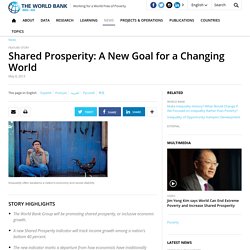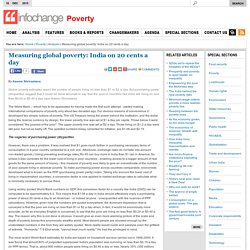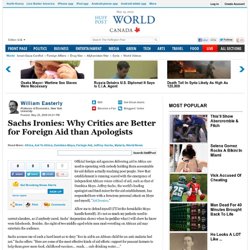

How is poverty measured? World Bank data on measure of global poverty level faulted - Business_News. In early 2012, outgoing World Bank President Robert Zoellick announced that the Millennium Development Goal of halving the global poverty rate relative to its 1990 level had been achieved in 2010 – five years ahead of schedule.

However, many analysts have challenged estimates that rely on the World Bank’s current poverty line, raised in 2008 from $1 to $1.25 per day, in purchasing power parity (PPP) terms. Critics argue that, for methodological reasons, the PPP-based poverty line misrepresents the prevalence of poverty worldwide. For example, the three rounds of the World Bank’s International Comparison Programme that have been conducted so far have each defined the poverty line differently, underscoring the weakness of the current measure.
In fact, taking into account inflation in the US, the poverty line should have been raised to $1.45 per day in 2005. First, many countries lack survey data showing how income and consumption are distributed. Focus: Poverty, inequality and redistribution. Population below poverty line by country - Thematic Map - Africa. Shared Prosperity: A New Goal for a Changing World. Does the shared prosperity goal imply reducing inequality by redistributing wealth?

No. We need to focus first on growing, as fast as possible, the welfare of the less well off. But we’re not suggesting that countries redistribute an economic pie of a certain size, or to take from the rich and give to the poor. Rather, we’re saying that if a country can grow the size of its pie, while at the same time share it in ways that boost the income of the bottom 40 percent of its population, then it is moving toward shared prosperity. So the goal combines the notions of rising prosperity and equity. We’ll be tracking growth in incomes of the bottom 40 percent, and due to the fact that that this will be done alongside national income growth monitoring (which countries already do), countries will see directly how the less well-off are faring.
It’s a fact that no country has transitioned from middle to high-income status with high levels of inequality. Millennium Indicators. Progress towards the achievement of the Millennium Development Goals (MDGs) can be tracked using the MDG framework, formed by 21 targets and 60 official indicators which measure extreme poverty and hunger, education, women's empowerment and gender equality, health, environmental sustainability and global partnerships for development.

DW_inequality_latin. Measuring global poverty: India on 20 cents a day. By Aseem Shrivastava Global poverty estimates report the number of people living on less than $1 or $2 a day.

But purchasing power (dis)parities suggest that it could be more accurate to say that the poor in countries like India are living on less than $0.20 or $0.40 a day, says Aseem Shrivastava The World Bank -- which has to be applauded for having made the first such attempt - started making international comparisons of poverty only about two decades ago. For obvious reasons of convenience it developed two simple notions of poverty. The US Treasury being the power behind the institution, and the dollar being the reserve currency by design, the lower poverty line was set at $1 a day per capita. The vagaries of purchasing power (dis)parities However, there was a problem.
Using widely quoted World Bank numbers on GDP, this conversion factor for a country like India (2005) can be computed to be approximately 5.3. OPHI-wp17. William Easterly: Sachs Ironies: Why Critics are Better for Foreign Aid than Apologists. Official foreign aid agencies delivering aid to Africa are used to operating with nobody holding them accountable for aid dollars actually reaching poor people.

Now that establishment is running scared with the emergence of independent African voices critical of aid, such as that of Dambisa Moyo. Jeffrey Sachs, the world's leading apologist and fund-raiser for the aid establishment, has responded here with a ferocious personal attack on Moyo and myself, " Aid Ironies . " Allow me to defend myself (I'll let the formidable Moyo handle herself). It's not so much my pathetic need to correct slanders, as if anybody cared.
Sachs' desperation shows when he peddles what I will show he knew were falsehoods. Sachs accuses me of such a hard heart as to deny "$10 in aid to an African child for an anti-malaria bed net. " You guessed it -- that was me again, illustrating how aid COULD work if only aid agencies were accountable for their actions. Easterly-africas_poverty_trap. Jeffrey Sachs on African aid. Aid For Africa Video Sachs/Collier/Easterly Mashup.
Poor Economics. The quest to end poverty. Hans Rosling: New insights on poverty. The Challenge of World Poverty.